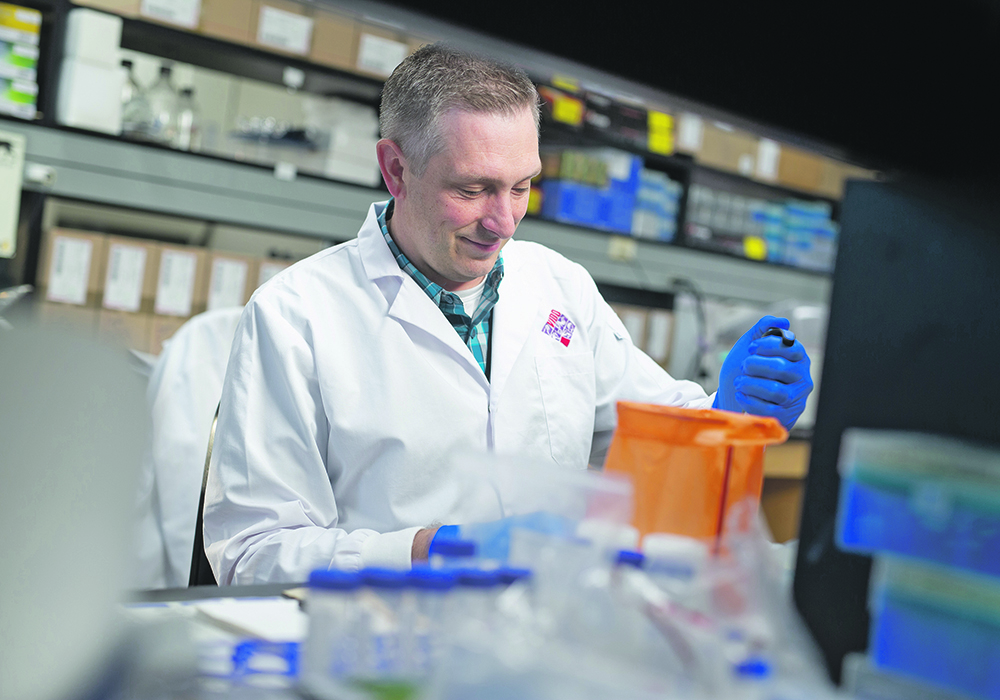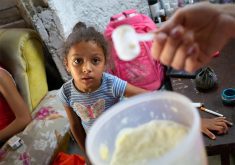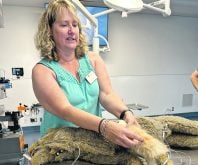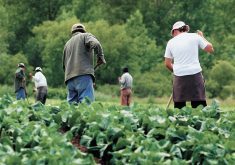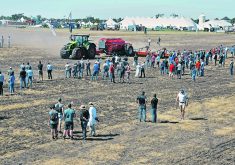With governments around the world rolling out several COVID-19 vaccines, are Canadian development efforts being left behind?
“I think it’s too early for us to say, ‘OK, we can sit back and the problem is solved,’” said Dr. Volker Gerdts. “We first have to see how well these vaccines actually do.”
Gerdts is director and chief executive officer of the Vaccine and Infectious Disease Organization-International Vaccine Centre (VIDO-InterVac). The Saskatoon-based research institute is a prominent Canadian contender in developing a vaccine against SARS-CoV-2, the virus behind the pandemic.
Read Also

Farming Smarter receives financial boost from Alberta government for potato research
Farming Smarter near Lethbridge got a boost to its research equipment, thanks to the Alberta government’s increase in funding for research associations.
While care has been taken to ensure the vaccines being given are safe and effective, Gerdts said many questions remain. How long does immunity last? Are booster shots needed? When and how often? Do the vaccines prevent COVID-19 transmission from person to person? How much do they cost, how hard are they to make, and how are they stored? One vaccine, for example, must be stored and transported at -70 C, more than three times colder than a domestic deep freeze.
As of late November, the VIDO-InterVac team had developed two vaccine candidates and by late December had received the go-ahead from Health Canada for Phase 1 trials in humans. Phase 1 and Phase 2 trials determine if the product is safe and if it stimulates an immune response in humans.
Phase 3 trials use thousands of volunteers to test the candidates to see if they protect people from the disease under real-world conditions. Researchers can find out how effective the vaccines are by comparing vaccinated and non-vaccinated groups. Ironically, COVID-19 has to be present in the population at high enough levels to do this.
While the VIDO-InterVac candidates will likely be done Phase 3 in December, these trials might have been completed in late summer but for a lack of manufacturing capacity. Demand for vaccine components has outstripped supply, causing delays.
The team began work on vaccine in the second week of January 2020, and by March had already begun testing it on animals. By May, they had successful results. But the facility needed to manufacture the antigens (the key components of the vaccine) had only just been funded and was still more than a year away from completion. Without sufficient in-house capabilities, VIDO-InterVac had to go to off-site manufacturers and get in line with everyone else.
“If you look at the sequence of events, what has taken us the longest is the manufacturing of these components and getting this clinical-grade material,” Gerdts said. “If our facility had been up and running, we could have started that manufacturing at the same time we started to work on a vaccine.”
Despite delays, Gerdts said work is continuing on VIDO-InterVac’s vaccine, and if all goes well, it should be ready for release in late 2021 to join the world’s portfolio of prevention against the pandemic.
Among the lessons COVID-19 has taught the world is the need to be prepared.
“It’s little bit like a fire department. It’s costly to maintain, but once you have a fire, you want somebody to be able to deal with it,” Gerdts said.
“For years now, we have talked to the government and made them aware that Canada is lacking on its manufacturing capacity and as you know, we got funding to establish a manufacturing facility here at VIDO-InterVac. Only this year did we get the funding to really do this.”
VIDO-InterVac initially received $3.6 million in 2018 for this purpose, but received a significant boost with another $12 million from the feds in March 2020. The facility will be geared to supporting vaccine development, but will be able to ramp up to help serve Canadian needs directly should the need arise.
With this crucial bit of infrastructure in place, VIDO-InterVac is proposing a next step to all levels of government: become the Canadian Centre for Pandemic Research.
Gerdts said there is much to support this, including the organization’s long history serving production agriculture with several world firsts, including the first effective vaccine against calf scours.
VIDO-InterVac has developed vaccines against diseases caused by coronaviruses in cattle and pigs, and more recently demonstrated the effectiveness of a vaccine against MERS (Middle East Respiratory Syndrome) that affects camels and is also highly dangerous to people. The principal researcher, Darryl Falzarano, took his experience with this coronavirus to lead the team working on the COVID-19 vaccine.
The completion of the InterVac in 2011 brought with it the largest Level 3 containment facilities in the country, capable of handling large animal vaccine trials. Gerdts said the facility was built with the future in mind, able to be upgraded to full Level 4 lab status. This would make it the second such facility in the country and a good complement to the National Microbiology Lab in Winnipeg, famous for developing the first effective vaccine against Ebola.
“We were talking about manufacturing capacity and well, it wasn’t ready. The same goes with research expertise and the capacity to do Level 4 research,” Gerdts said. “Right now the only facility in the country is in Winnipeg. If we have the capability here of doing it and it doesn’t require any construction or any renovation, then why not upgrade it and be ready?”
VIDO-InterVac also has the powerful combination of animal, environmental, and human health experience – a concept called “one health.” It benefits further from its proximity to agriculture, biosciences, veterinary, and medicine colleges and associated research at the University of Saskatchewan.
Gerdts said that by marrying these biosciences to computers, something called bioinformatics, they are well-positioned to excel in both predicting and responding to emerging diseases. And emerge they will.
“There will be more. There will be definitely more,” he said. “You and I, in our lifetimes, will see another one, maybe two. When these diseases emerge, and I mean, the rough number people are saying is essentially three new diseases every year. And every third year, one of those turns into a larger event.”



